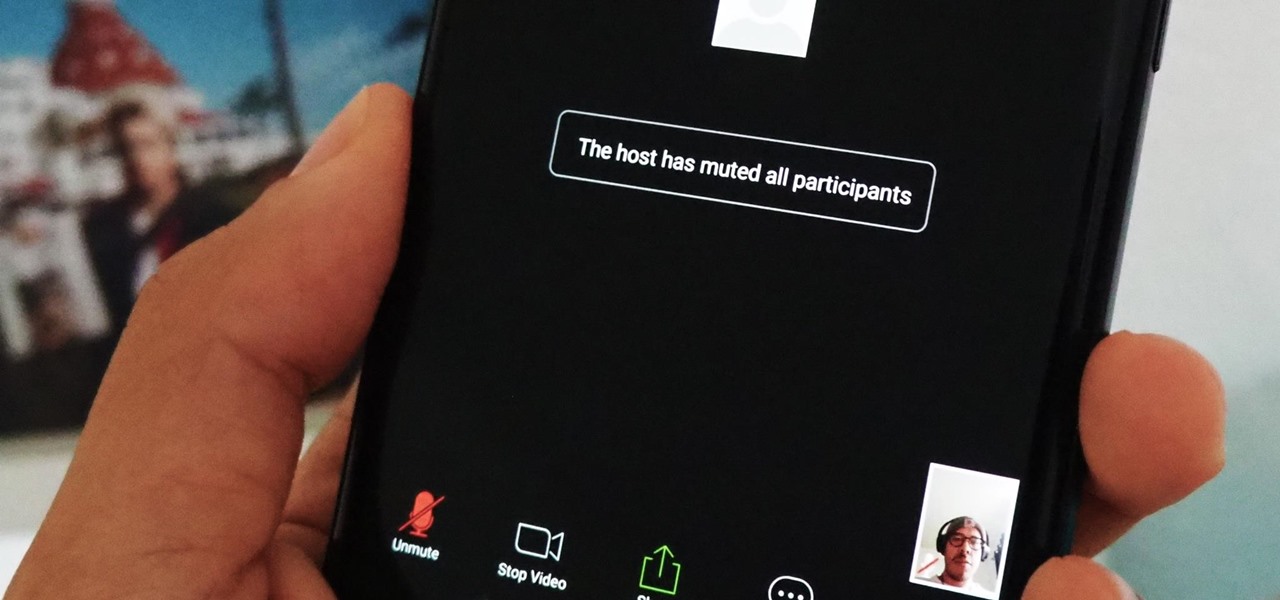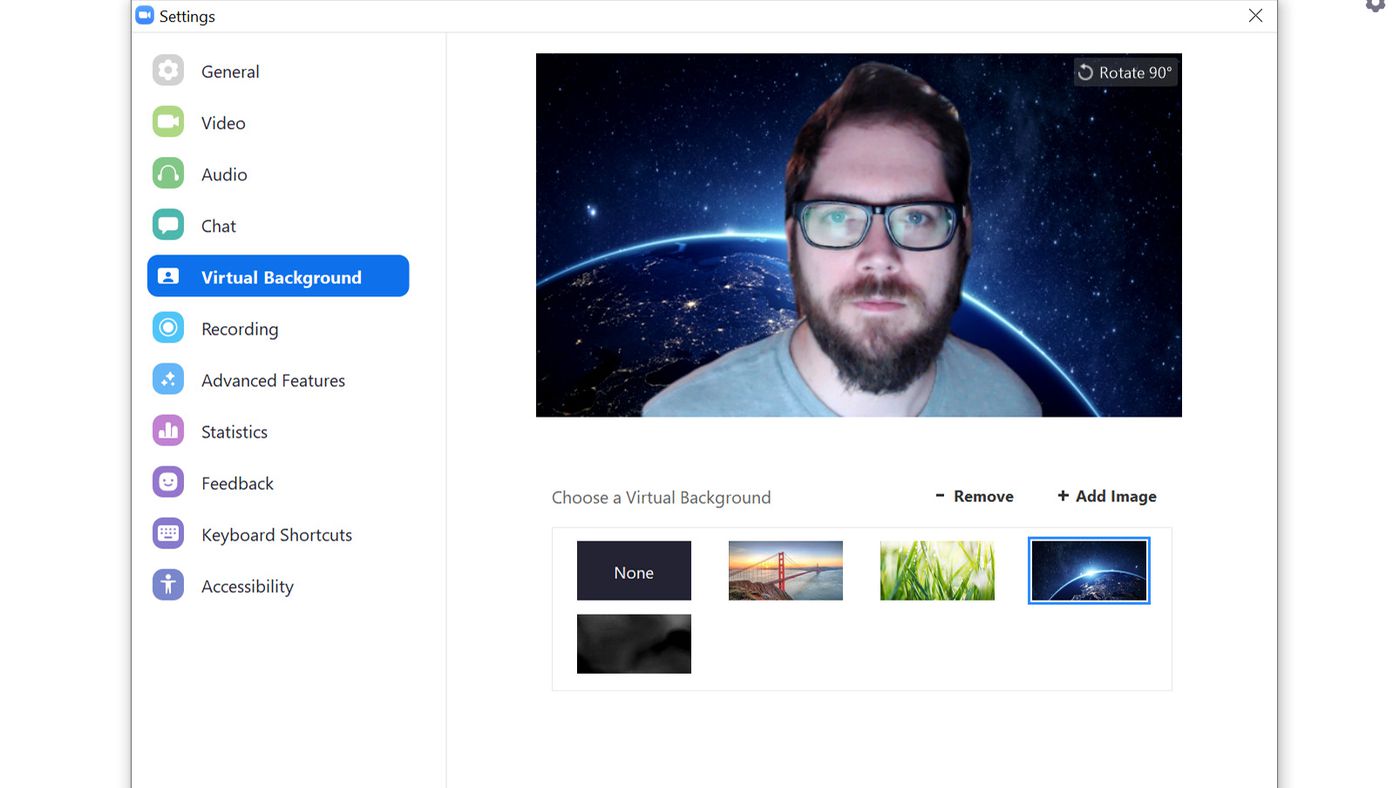Introduction
Zoom has become a popular platform for virtual meetings, webinars, and online classes. As a participant, it’s important to know how to effectively use its features, including the ability to mute yourself or others. In this article, we will focus on muting on Zoom specifically on your phone.
With the rise of remote work and virtual collaborations, muting can play a vital role in ensuring a smooth and interruption-free meeting experience. Whether you’re in a noisy environment or need to eliminate background distractions, muting allows you to maintain clarity and professionalism during your Zoom sessions.
In this guide, we’ll walk you through the steps to mute yourself on Zoom using the mobile app, as well as how to mute other participants. Additionally, we’ll introduce you to the “Mute All” feature, which can be particularly useful for large online gatherings or presentations.
By following these instructions and utilizing these features effectively, you’ll be able to navigate through your Zoom meetings with ease and professionalism. So, let’s dive in and explore how to make the most out of the mute function on Zoom!
Why would you want to mute on Zoom?
Before we delve into the specifics of muting on the Zoom app, let’s take a moment to understand why muting can be a useful feature during your online meetings or classes.
First and foremost, muting yourself on Zoom ensures that background noise or interruptions do not hinder the overall communication flow. Whether you’re working from a bustling coffee shop, have noisy neighbors, or are joining a meeting from a busy household, muting yourself can help maintain a professional and distraction-free environment.
Muting also allows you to be considerate towards other participants. By muting yourself when you’re not speaking, you prevent any unintended interruptions or distractions for others. This is particularly important in group settings where multiple people are discussing different topics simultaneously.
Moreover, muting can be essential for privacy purposes. If you find yourself in a situation where you need to have a private conversation or handle personal matters while remaining connected to a Zoom session, muting yourself grants you the confidentiality you require.
In addition, muting can help you maintain control and avoid any inadvertent audio sharing. By keeping yourself muted, you can prevent any accidental background noise, conversations, or unrelated discussions from being broadcasted to the entire meeting.
Lastly, muting other participants can also be an effective way to manage the meeting flow and minimize disruptions. As the host or co-host, you have the option to mute attendees who may have forgotten to mute themselves or are causing disturbances with their audio. This ensures a smoother experience for everyone involved.
By understanding the reasons behind muting on Zoom, you gain an appreciation for its benefits and its role in facilitating productive and efficient virtual gatherings. Now let’s explore how to effectively utilize the mute function on your Zoom mobile app.
How to mute on Zoom on your phone
Muting yourself or others on Zoom using your phone is a straightforward process. To get started, follow the steps outlined below:
1. Open the Zoom app on your phone and sign in to your account.
2. Join or start a meeting by selecting the appropriate option from the app’s interface.
3. Once you are in the meeting, you will see various controls at the bottom of the screen. Look for the microphone icon, usually placed in the bottom left corner.
4. To mute yourself, tap on the microphone icon. The icon will change to show that you are muted, and you will no longer be audible to others in the meeting.
5. To unmute yourself and start speaking, tap on the microphone icon again. The icon will revert to its original state, indicating that you are now unmuted.
6. If you need to mute other participants, you must have the host or co-host privileges. Tap on the “Participants” button located at the bottom center of the screen.
7. A participants’ panel will appear on the right side of the screen. Look for the participant you wish to mute, and tap on the “More” option next to their name.
8. From the list of options that appear, select “Mute” to silence the selected participant. They will receive a notification that they have been muted, and their audio will be disabled.
9. If you are the host or co-host and want to mute all participants at once, tap on the “More” button in the participants’ panel.
10. From the options that appear, choose “Mute All” to mute everyone in the meeting. This can be particularly useful in scenarios where you want to deliver a presentation or conduct a webinar with limited interruptions.
Remember, the process to mute and unmute on Zoom using your phone may vary slightly depending on the device and operating system you are using. However, the basic functionality and features remain consistent across platforms.
Now that you know how to mute yourself and others during a Zoom meeting on your phone, let’s explore some additional tips for muting effectively.
Muting yourself
Muting yourself on Zoom is a simple and useful feature that allows you to control your audio during a meeting. Whether you want to eliminate background noise or listen attentively without interruptions, muting yourself ensures a focused and professional environment. Here are some tips for muting yourself effectively:
1. Be mindful of your audio: Before joining a Zoom meeting, ensure that you are in a quiet environment to minimize any potential distractions. However, if you are unable to find a silent space, muting yourself can greatly reduce or eliminate background noise.
2. Use shortcuts: To mute yourself quickly during a meeting, consider using the built-in shortcuts on your phone’s Zoom app. These shortcuts can vary depending on the device and operating system, but they generally involve pressing a combination of buttons to enable or disable the mute function.
3. Communicate when muted: When you mute yourself, it’s essential to let others know that you’re unable to speak at the moment. Use Zoom’s chat feature to type a message indicating that you are muted, or utilize non-verbal cues like nodding or using hand gestures to signal your understanding or agreement.
4. Listen actively: While you are muted, make sure to actively listen to others and stay engaged in the meeting. Take notes, follow the discussion, and be prepared to contribute when your turn comes. Active listening helps in maintaining the flow of the meeting and shows respect towards the speaker.
5. Unmute strategically: When it’s your turn to speak or contribute to the conversation, unmute yourself promptly. However, be mindful of any background noise that might occur when unmuting. To minimize such disturbances, use a headset with a built-in microphone, as it can provide better audio quality and minimize external noise.
6. Practice muting etiquette: Muting yourself goes beyond technicalities—it also involves respecting others and being considerate of their time and attention. Avoid unnecessary background noise, such as typing, shuffling papers, or engaging in unrelated conversations while others are speaking.
Muting yourself on Zoom demonstrates professionalism and courtesy, allowing for seamless communication and a productive meeting experience. By following these tips, you can ensure that you are using the mute function effectively, enhancing both your own participation and the experience of others in the meeting.
Muting other participants
As a host or co-host on Zoom, you have the ability to mute participants other than yourself. This feature comes in handy when you need to manage the audio output of the meeting and maintain a smooth flow of communication. Here’s how you can mute other participants:
1. As the host or co-host, you will see a participants’ panel on the side of the screen. Click on the “Participants” button located at the bottom center to open it.
2. In the participants’ panel, you will see a list of all the attendees. Locate the name of the participant you wish to mute.
3. To the right of their name, you will find various options. Click on the “More” button (represented by three dots) next to their name.
4. A dropdown menu will appear with different options. From the menu, select “Mute” to silence the selected participant’s audio.
5. Once muted, the participant will receive a notification indicating that their audio has been disabled. They will be able to see that they are muted but will not be able to unmute themselves, as only the host or co-host has the authority to unmute them.
6. If the participant wishes to speak, they can raise their hand using the Zoom’s “Raise Hand” feature. This allows them to signal the need to contribute or ask a question, and the host or co-host can then decide whether to unmute the participant temporarily.
By muting other participants, you can effectively manage the audio output of the meeting and reduce any background noise or distractions that may occur. This ensures that the main speaker or presenter’s voice is clear and uninterrupted, making it easier for everyone to follow along.
However, it is important to use this feature cautiously and only mute participants when necessary. It’s essential to create an inclusive and collaborative environment, allowing participants to participate and share their thoughts and ideas.
Now that you know how to mute other participants on Zoom, let’s explore the “Mute All” feature that can be particularly useful for large meetings or presentations.
Using the “Mute All” feature
Zoom’s “Mute All” feature is a powerful tool that allows hosts or co-hosts to quickly and efficiently mute all participants in a meeting. This feature is especially useful in scenarios where you need to deliver a presentation, conduct a webinar, or simply reduce background noise during a large gathering. Here’s how to use the “Mute All” feature:
1. As the host or co-host, you will find the “Participants” button at the bottom center of the screen. Click on it to open the participants’ panel.
2. In the participants’ panel, you will see a list of all attendees. At the bottom of the panel, you will notice several options. Click on the “More” button (represented by three dots).
3. A dropdown menu will appear, presenting various options. From the options available, select “Mute All”.
4. A confirmation dialog box will appear, asking you to confirm the action. Click on “Mute” to proceed.
5. Once you click “Mute,” all participants’ audio will be instantly muted. Each participant will receive a notification indicating that they have been muted, and they will see the microphone icon turned off.
If any participant tries to unmute themselves, they will be met with a message stating that only the host or co-host can unmute them. This allows you to retain control over the audio output and minimize interruptions or unwanted background noise.
It’s important to note that using the “Mute All” feature should be done thoughtfully and with consideration for the engagement and participation of participants. If you expect questions or want to encourage interaction, you can periodically unmute specific participants or provide breaks for attendees to ask questions or share their thoughts.
Utilizing the “Mute All” feature can enhance the overall experience of your Zoom meeting, ensuring a more focused and streamlined communication flow. It allows you to maintain control over the audio environment and create a professional and distraction-free atmosphere for your audience.
Now that you understand how to use the “Mute All” feature, let’s explore some additional tips for muting effectively on Zoom.
Tips for muting effectively on Zoom
Muting effectively on Zoom can greatly enhance your online meeting experience and ensure clear communication. Here are some helpful tips to make the most out of muting on Zoom:
- Test your audio: Before joining a meeting, ensure that your audio is working properly. Test your microphone and speakers to avoid any technical difficulties during the meeting.
- Use headphones or a headset: Using headphones or a headset can significantly improve audio quality and help isolate your voice from background noise, making it easier for others to hear you clearly.
- Mute yourself when not speaking: Always mute yourself when you are not speaking to minimize background noise and distractions. This courtesy allows other participants to focus on the current speaker.
- Be mindful of unmute delays: After you unmute yourself, make sure to allow a brief pause before speaking to avoid cutting off the beginning of your sentence. Account for any unmute delays to ensure smooth conversations.
- Utilize non-verbal communication: If you need to provide a quick response or acknowledgment while muted, you can use Zoom’s non-verbal communication features. These include raising your hand, using the “Yes,” “No,” or “thumbs up” reactions, or typing a message in the chat.
- Designate a mute facilitator: In larger meetings or webinars, consider assigning a co-host to help manage muting and unmuting participants. This ensures a smooth flow of communication, especially if there are numerous presenters or panelists.
- Inform others before unmuting: If you need to unmute, it’s helpful to give a heads-up, especially if others are in the middle of speaking. A quick “May I interrupt?” or “Can I add something?” ensures a smooth transition and avoids talking over someone else.
- Maintain professionalism when muting others: When muting other participants, do so politely and respectfully. Maintain open communication and provide clear guidelines or instructions if necessary.
- Stay attentive while muted: Even when you are muted, actively participate in the meeting by listening and taking notes. This demonstrates engagement and shows respect for those speaking.
By following these tips, you can maximize the effectiveness of muting on Zoom and contribute to a seamless and productive virtual meeting experience for everyone involved.
FAQs about muting on Zoom on your phone
Here are some frequently asked questions about muting on Zoom on your phone:
-
Can I mute myself without opening the Zoom app?
Yes, most smartphones have notification shortcuts that allow you to access basic Zoom controls, including muting yourself, without having to open the app. Simply swipe down on your notification panel and look for the Zoom icon or controls. These shortcuts may vary depending on your device and settings. -
Can I mute other participants using the Zoom mobile app?
Yes, as a host or co-host, you can mute other participants using the Zoom mobile app. Follow the steps outlined earlier in this article to access the participants’ panel and mute specific participants from the list. -
Can participants unmute themselves if I have muted them?
No, participants that are muted by the host or co-host will not be able to unmute themselves. They will receive a notification stating that only the host or co-host can unmute them. This ensures that the meeting remains organized and controlled. -
What if I accidentally unmute myself or someone else?
If you accidentally unmute yourself, simply tap on the microphone icon again to mute yourself once more. If you accidentally unmute another participant, you can quickly mute them again by following the steps to mute other participants outlined earlier in this article. -
Can I mute or unmute someone during a breakout room session on Zoom?
As of now, the host or co-host cannot directly mute or unmute participants in breakout rooms using the Zoom mobile app. Participants have control over their own audio in breakout rooms, and they can mute or unmute themselves. However, the host can join the breakout rooms and provide instructions or guidance on muting if necessary.
Remember that Zoom regularly updates its features and functionality, so it’s always best to check the official Zoom documentation or website for the most up-to-date information regarding muting on your mobile device.
By understanding the basics of muting on Zoom and exploring the various options available, you can easily navigate through your meetings on your phone and ensure a pleasant and productive virtual gathering.
Conclusion
Muting on Zoom is a valuable tool that allows you to maintain a professional and distraction-free environment during virtual meetings on your phone. Whether you need to eliminate background noise, respect others’ time, or focus on a presentation, the ability to mute yourself or other participants can greatly enhance the overall meeting experience.
In this article, we have explored the process of muting on Zoom using your phone’s app. We discussed how to effectively mute yourself, mute other participants, and use the “Mute All” feature when necessary. Additionally, we provided tips for muting effectively and answered some common questions about muting on Zoom.
Remember to test your audio, use headphones or a headset, and be mindful of muting etiquette to ensure clear and uninterrupted communication. Utilize the non-verbal communication tools available on Zoom to stay engaged while muted, and be respectful when muting other participants to maintain a collaborative atmosphere.
As you become familiar with muting on Zoom, you’ll be able to navigate through virtual meetings with ease, professionalism, and minimal disruptions. By using the mute function effectively, you can contribute to a more productive and efficient meeting environment, enhancing communication and collaboration among participants.
Continue to explore and experiment with the features and functionalities of Zoom to make the most out of your online meetings. Remember that Zoom regularly updates its platform, so stay updated with the latest information and features from the official Zoom documentation or website.
With these insights and a good understanding of muting on Zoom, you are now well-equipped to have successful and engaging virtual meetings on your phone. Start muting, participating, and connecting with others through Zoom, and make the most of your online collaboration experiences.

























